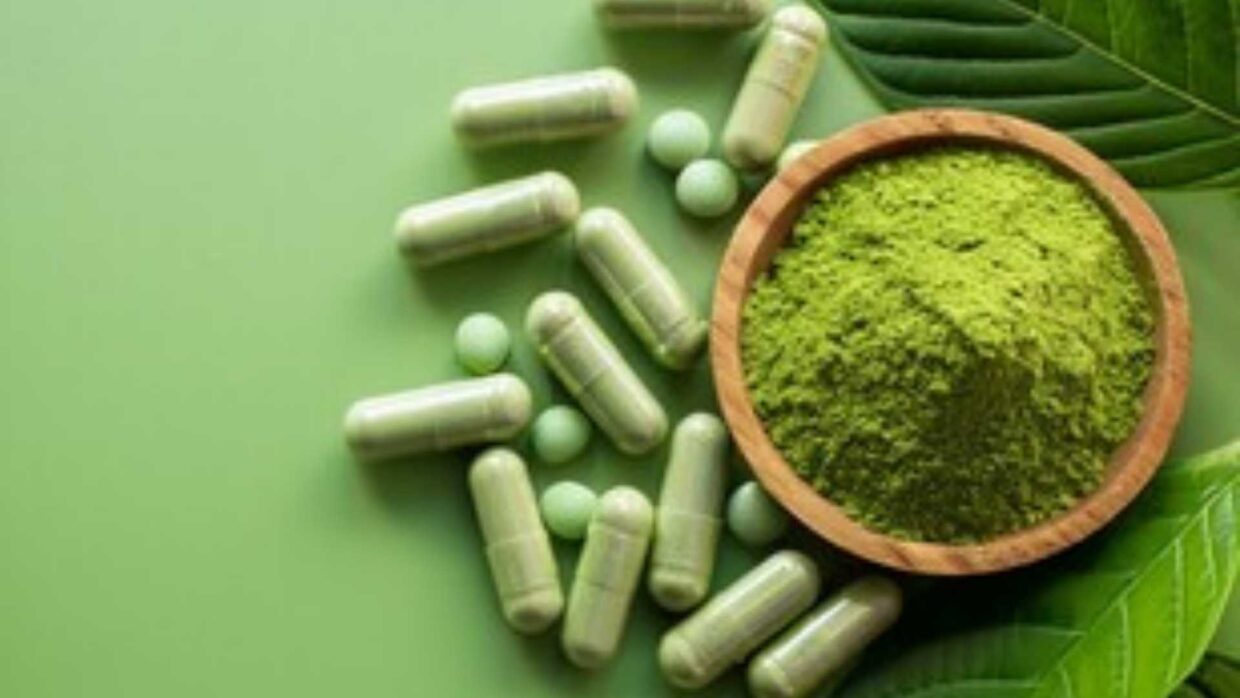The Kratom Consumer Protection Act (KCPA) is a critical push toward safety standards and legal protection for kratom products in all of the United States.
Produced through the American Kratom Association (AKA), this legislation seeks to ensure that consumers are protected from adulterated products by regulating production and by mandating tests, while legally preserving access to pure, unadulterated kratom.
While the legality of kratom remains up in the air, the KCPA helps to determine a moderate solution that handles both concerns of public health and the rights of consumers.
In this blog, we’ll guide you on everything you need to know about the KCPA, including its key provisions, and which states have used it.
Becoming familiar with these regulations, whether a kratom user worried about product safety, a vendor looking to be compliant, or simply wanting to know the status of kratom within the legal system, can help you to use the product safely and responsibly.
We’ll discuss how the KCPA operates and its consumer protection,s as well as what the days ahead will be like for kratom legislation.
What Is the Kratom Consumer Protection Act?
The Kratom Consumer Protection Act (KCPA) is a legislative scheme aimed at regulating the kratom industry with the view of making the consumers safe by ensuring a manufacturing, labeling, and sales standard in the industry.
Instead of an outright ban on kratom, the act encourages transparency and responsible marketing, and product transparency.
Originally developed by the American Kratom Association (AKA), the KCPA has been introduced and adopted by several U.S. states as a framework to:
- Prevent adulterated or contaminated kratom products from reaching consumers
- Ensure labeling accuracy and ingredient transparency
- Establish age restrictions for kratom sales
- Outline penalties for non-compliance
The ultimate goal is to legitimize the kratom industry through regulation, not criminalization.
Why Was the KCPA Introduced?
Regulatory attention has always been placed on kratom. Supporters point to its possible benefits, while opponents are scared by its safety and abuse potential.
However, when it comes to the risks for consumers, one of the greatest ones may not be so much kratom itself but rather the unregulated and contaminated products or products that are mislabeled.
The increasing tendency towards adulterated kratom products with fatal supplementations (synthetic opioids or heavy metals) generated public health warnings. States required a map on how best to protect consumers without federal oversight.
By introducing standardization and enforcement mechanisms, the KCPA aims to:
- Eliminate unsafe kratom from the market
- Protect informed consumer choice
- Prevent unjust bans based on misinformation
This approach has garnered support from many lawmakers, scientists, and advocates who recognize the value of a regulated rather than a prohibited market.
Key Provisions of the Kratom Consumer Protection Act
While specific wording may vary from state to state, most versions of the KCPA share the following core elements:
1. Age Restrictions
Kratom cannot be sold to individuals under a certain age, typically 18 or 21, depending on state law.
2. Labeling Requirements
Labels must list:
- All ingredients
- Alkaloid content (mitragynine and 7-hydroxymitragynine)
- Serving sizes
- Recommended usage guidelines
- Warning statements (e.g., not for use during pregnancy or with certain medications)
3. Bans on Adulterants and Contaminants
The KCPA prohibits the sale of kratom products that:
- Contain synthetic or non-kratom alkaloids
- Are mixed with illicit drugs or controlled substances
- Contain dangerous contaminants (e.g., salmonella, heavy metals, or mold)
4. Testing Standards
Products must undergo third-party lab testing to ensure they are free from harmful substances and match their labeling claims.
5. Penalties for Non-Compliance
Businesses that violate the act may face fines, license suspensions, or criminal penalties. These enforcement provisions ensure accountability across the supply chain.
State-by-State Breakdown: Where Kratom is Banned or Regulated
Some states have banned kratom entirely, while others have implemented regulatory guidelines to promote product safety. Additionally, in some states where kratom is legal statewide, individual counties or cities have enacted local bans.
States That Have Outright Banned Kratom
The following states classify kratom as a controlled substance and prohibit its sale, possession, or distribution:
- Alabama (2016): Banned mitragynine and 7-hydroxymitragynine as Schedule I substances.
- Arkansas (2016): Listed kratom as a controlled substance.
- Indiana (2014): Incorrectly classified kratom as a synthetic drug.
- Rhode Island (2017): Kratom is banned statewide, though decriminalization efforts are underway.
- Vermont (2016): Banned kratom but is currently reviewing possible decriminalization.
- Wisconsin (2014): Listed kratom as a Schedule I synthetic cannabinoid.
States with Kratom Regulations & Consumer Protection Laws
Rather than banning kratom outright, some states, like Arizona, have enacted the Kratom Consumer Protection Act (KCPA) or similar statutes to ensure safe sales and labeling. The regulations typically include:
- Age restrictions (usually 18 or 21+).
- Mandatory product labeling (must list mitragynine & 7-hydroxymitragynine content).
- Bans on synthetic or adulterated kratom.
- Regulatory oversight & licensing for vendors.
The following states have enacted KCPA regulations:
- Arizona (2019): Prohibits sales to minors and mandates proper labeling.
- Florida (2023): Under the Florida Kratom Consumer Protection Act, sales to individuals under 21 are prohibited, but Sarasota County prohibits its sale.
- Georgia (2019): Requires product purity standards and safety warnings.
- Kentucky (2024): Prohibits sales to minors and adulterations, and mandates proper labeling.
- Minnesota (2023): Prohibits the sale of kratom to minors under 18.
- Nevada (2019): Kratom is legal, but sales to minors are restricted.
- Tennessee (2024): While kratom products are regulated, the natural, botanical plant itself remains legal.
- Texas (2023): The Texas Kratom Consumer Health and Safety Protection Act prohibits sales to minors and mandates proper purity standards and labeling.
- Utah (2019): Requires state registration and product testing.
- West Virginia (2023): Penalizes selling kratom without a permit, selling contaminated kratom products, and selling to minors.
States with Local Bans Despite Statewide Legality
In some states where kratom is legal statewide, individual counties or cities have implemented local bans, including:
- California: Kratom is legal but banned in San Diego and Oceanside.
- Colorado: While legal statewide, Denver prohibits the sale of kratom for human consumption. Other localities like Parker Town and Monument Town also ban kratom sales.
- Florida: While legal statewide for adults 21+, Sarasota County bans it entirely.
- Illinois: The cities of Jerseyville and Alton have banned kratom.
- Mississippi: Multiple cities and counties, including the City of Oxford and Union County, banned kratom.
- New Hampshire: Legal statewide but banned in Franklin.
- Oregon: Kratom is legal for individuals over 21. Manufacturers and retailers must disclose kratom as an ingredient in their products.
The Role of the American Kratom Association (AKA)
The American Kratom Association is a nonprofit organization that advocates for kratom consumer rights. It plays a pivotal role in:
- Drafting the KCPA
- Educating legislators and the public about kratom
- Funding scientific research
- Promoting industry best practices
The AKA’s commitment to responsible use and access has helped shape a narrative that balances public health with personal freedom.
In partnership with scientists, policy experts, and grassroots supporters, the AKA has fought to prevent kratom bans and introduce evidence-based regulation.
Legal Status of Kratom in the United States
Understanding the legal status of kratom is crucial for consumers, businesses, and policymakers. The landscape remains fragmented due to the lack of federal regulation.
1. Federally
Kratom is not listed as a controlled substance under the act, making it legal at the federal level.
However, the FDA has not approved kratom for any medical use, and the DEA proposed putting it on a Schedule I drug, but public outcry and scientific opposition stopped the decision.
2. State Level
Here’s a general breakdown of the state-level legal status:
- Legal with Regulation: Utah, Arizona, Nevada, Georgia, Oregon
- Completely Legal (No Regulation): California (except San Diego), Florida (except Sarasota County), New York, etc.
- Banned: Alabama, Arkansas, Indiana, Rhode Island, Vermont, Wisconsin
- Pending Legislation: Many states are reviewing bills to either ban or regulate kratom.
Laws can also differ from the county to the municipality level, such that consumers and vendors need to be aware of local regulations.
Final Thoughts
The Kratom Consumer Protection Act is a major step in the direction of legalization and regulation of the kratom industry in the United States. Instead of bearing the brunt of broad bans or misinformation, the KCPA advocates for consumer protection, product safety, and empowered decision-making.
With the evolving legal status of kratom, the KCPA can bridge the gap between the unregulated chaos over overregulated chaos. It makes consumers powerful, makes businesses responsible, and fosters a culture of transparency.
If you are a consumer support business that follows the KCPA standards. If you’re a vendor, be ahead of compliance. And if you are a policymaker, think about the KCPA as an alternative, workable option to prohibition.
Recommended Readings:










